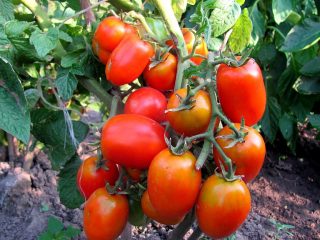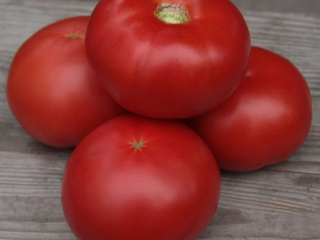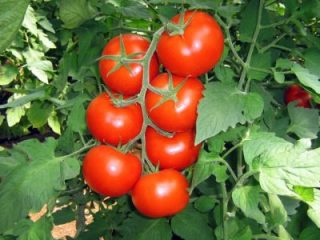Content
Disputes about how to properly grow tomato seedlings, have not subsided for decades. Each breeder and gardener has their own planting rules, which they adhere to from year to year. Which planting tomato seedlings can be considered correct, what needs to be taken into account when choosing seeds, dishes and soil for tomatoes, as well as methods for caring for seedlings - in this article.
How to properly plant tomatoes for seedlings
Growing tomatoes consists of several stages, one of which is sowing seeds for seedlings and caring for them. The goal of any gardener or summer resident is to obtain a good harvest of tasty and aromatic tomatoes. In order to achieve excellent results, you will have to go through several stages:
- Select seeds and variety of tomatoes.
- Buy or build containers for tomato seedlings.
- Mix the soil.
- Prepare seeds for planting.
- Sow seeds in the ground.
- Pick tomatoes.
- Prepare the seedlings for transfer to a permanent location.
Each stage of growing tomato seedlings needs to be described in more detail.
Selection of tomato seeds
First of all, the owner of the plot must decide on the variety of tomatoes. In this case, several factors need to be taken into account:
- Tomato ripening time. So, for open ground it is better to prefer early-ripening and medium-ripening varieties of tomatoes, and late-ripening tomatoes are also suitable for greenhouses.
- Bush height. As a rule, tall tomatoes are grown in greenhouses or greenhouses - there they save space and give good yields. While in the beds it is more convenient to care for low-growing tomatoes, because they do not have to be tied to trellises, protected from wind and drafts, and regularly pinched and pinched.
- Region in which tomatoes will be grown, is also very important in choosing a variety. There are tomatoes selected specifically for the climate of Siberia or the Urals. Such varieties will not be able to develop normally in the hot south, because they were developed for a humid and cool climate. Also, heat-loving varieties of tomatoes will not give a good harvest in cold regions - the plants will be spoiled by late blight, they will die from night frosts or wither from lack of sun.
- From the fact in a greenhouse or in open ground Whether tomatoes will be grown depends on a lot. Greenhouse crops are more capricious; they love a humid microclimate, regular care, and a comfortable, stable temperature, but they delight the owner with abundant harvests of beautiful fruits. But garden tomatoes are less capricious, their fruits are more aromatic and tastier than greenhouse tomatoes, these tomatoes tolerate low night temperatures and slight drought well.
- Not only the taste, but also the appearance of the fruit plays a big role in choosing a variety. After all, there are tomatoes for pickling; they are medium in size, round in shape, and have a thick skin. There are also tomatoes intended for salads; they are distinguished by their large size, sugary pulp, excellent taste and smell.To decorate dishes, they use cocktail varieties or cherry tomatoes, which resemble cherries: they are just as small and round. Another distinctive feature is the color of the fruit. After all, tomatoes are not only red, there are even black and purple tomatoes, not to mention the more standard green and yellow fruits.
All this needs to be analyzed at the preparatory stage. Only after deciding on their capabilities and requirements for tomatoes do they choose a specific variety.
It’s good if the ripening time of tomatoes is different - then the family will be able to eat fresh vegetables from mid-summer until the end of autumn.
When buying seeds online, you need to pay attention to the number of seeds in one bag: there are professional and amateur packaging of seeds. For amateurs, tomatoes with 10-12 seeds per package are suitable, but for professional cultivation you need to purchase large quantities - from 500 to 1000 pieces per package.
Dishes for tomato seedlings
How can you grow tomato seedlings without pots and boxes? Containers for tomatoes are sold in a huge assortment, you can find ordinary plastic pots, wooden boxes, peat glasses, tablets, glasses with a removable bottom, snails and much more.
In order not to spend extra money, containers for tomato seedlings can be easily found on your farm or built from available materials. After all, anyone can put together a box from unnecessary boards, what can we say about “snails” or “diapers”, which are rolled up from thick polyethylene.
Tomato seedlings should only be planted in sterile containers. Therefore, even purchased brand new cups will have to be disinfected. To do this, it is convenient to use a strong solution of manganese: the seedling container is simply immersed in the liquid for a few minutes, after which the container is allowed to dry.
As cups, you can use trimmed tetra packs of juice or milk, yogurt glasses or children's curds. In general, anything that is in the house will do. The exception is metal containers - it is incorrect to grow seedlings in such containers.
Soil composition
Prepared and sterile containers must be filled with soil for seedlings. It must be remembered that tomato seedlings should be planted in slightly acidic, loose soil that can retain moisture.
Ideal for tomatoes is soil obtained by combining two parts humus and one part black soil. If there is no fertile soil on the site, it can be replaced with any purchased mixture for seedlings.
Another “recipe” for a mixture suitable for tomatoes: humus, sand and turf soil, which can be found in the garden under trees or in an area with weeds. To disinfect the soil and prevent germination weed together with seedlings, you can use one of the methods:
- freezing the soil in the freezer or outside in winter
- calcining the soil in the oven or microwave
- watering the soil poured in a container with boiling water
- impregnation of the soil with a solution of manganese (done several days before sowing the seeds so that they do not get burned).
There must be holes in the bottoms for water drainage; glasses and drawers should be installed better than stands to ensure better ventilation. A drainage layer at the bottom of the container is very effective; it can be made of small pebbles or broken shells.
Preparing tomato seeds
Of course, seed material from good agricultural companies will sprout without preliminary preparation. After all, such seeds go through several stages of processing: from disinfection to hardening and feeding.
But homemade seeds, collected with your own hands or donated by neighbors, must be pre-treated before planting in the soil:
- Inspect the seeds and discard uneven, deformed, darkened specimens.
- Place the tomato seeds in salted water, stir with a spoon and remove any seeds that float to the surface. These seeds are empty and will not sprout.
- Disinfect seeds using one of a variety of methods. One of these disinfection methods is soaking tomato seeds in water with the addition of hydrogen peroxide (3 ml of hydrogen peroxide per 100 ml of water).
- After disinfection, you can begin germination. Before this, you can also treat the seed with growth stimulants or place them for a day in an aqueous solution of wood ash (several tablespoons of ash per liter jar of boiled water). You need to germinate the seeds on a damp cloth or cosmetic sponges made of cotton wool. This stage will take several days.
- Germinated seeds can be placed in the refrigerator for a day - this will harden the seedlings and facilitate their acclimatization after diving and transplanting into the ground.
Many gardeners do not germinate tomato seeds, believing that the fragile sprouts are very easy to damage when planting.
How to properly plant seeds in the ground
If tomato seeds have been previously germinated, they must be transferred into the soil very carefully. It is very convenient to use tweezers for this. Each seed must be placed vertically, with the sprout pointing upward. The seeds are carefully sprinkled with dry soil on top and not pressed down. There is no need to water the seedlings; you can sprinkle the soil from a spray bottle with warm water that has been standing for 24 hours - this will somewhat compact the soil.
For swollen or dry seeds, any sowing method is suitable. It is convenient to sow seeds in wooden boxes or general containers in pre-prepared grooves. To do this, use a wooden stick or a blunt knife to draw stripes on the soil: a depth of about centimeter, the distance between the lines is approximately 4 cm.
Tomato seeds are placed in the grooves at intervals of 2-2.5 cm. More dense planting will lead to the fact that the seedlings will be weak and frail, the plants will not have enough nutrients and moisture.
Ideally, the gardener does not have to irrigate the seedlings before the first shoots appear. As a last resort, it is allowed to slightly irrigate the parched soil with a spray bottle.
The seeds are sprinkled with a centimeter layer of soil and compacted slightly by pressing with your fingers. Now the boxes need to be covered with cellophane and put in a warm place for several days (7-10).
When green shoots begin to appear, the film must be removed immediately, otherwise the seedlings may become stubborn and turn yellow.The air temperature at all stages of growing tomato seedlings should be no lower than 23 degrees.
Diving tomatoes
It is better to plant tomato seedlings with the diving stage. Tomatoes have a fairly strong root system, so they tolerate transplantation to a new location well. The diving stage is necessarily necessary when tomato seeds are sown in a common container.
Also, diving helps to harden the seedlings a little, making them more stocky and strong. At this stage, you can slightly reduce the growth of overly elongated tomato seedlings - the plants are simply buried in the soil up to the cotyledon leaves.
Before planting, tomato seedlings should be watered generously with warm water. You need to remove the plants using a knife or small metal spatula. You need to try to capture not only the plant itself, but also the lump of earth between the roots.
If weak or damaged tomatoes are found, they should be discarded. During the dive, the strongest and strongest plants are selected. Plant tomatoes in separate containers, one or two plants in each. If you choose the method of planting in pairs, at the stage of formation of the fourth or fifth leaf you will need to pinch the weaker tomato and tie the stems of both plants with nylon thread. In this way, it will be possible to grow stronger seedlings that will give a bountiful harvest.
Containers with pickled tomatoes should not be placed in too bright sunlight.
While the plants are acclimatizing, it is better to use artificial lighting or place the seedlings on dimly lit windowsills.
Caring for tomato seedlings
By growing seedlings yourself, you can be confident in their quality. But for a good result you will have to work a little:
- Water tomato seedlings only with soft water. This can be settled, boiled, melt water, which is heated or kept near heating devices. The water temperature for watering seedlings should be about 20 degrees.
- It is not always necessary to fertilize seedlings. Tomatoes can have enough nutrients, especially if high-quality seeds were used, they were fed, and fertile soil with a balanced composition was prepared for seedlings. A lack of microelements will be indicated by the lethargic appearance of tomatoes, drooping or yellowed leaves, marbled spots on the foliage, and a weak and thin stem. In this case, you need to fertilize by first diluting the fertilizer in water for irrigation.
- Before moving to a permanent place, the seedlings should be hardened off a little. 10-14 days before planting, they begin to open the window in the room, then take the boxes out to the balcony for a few minutes, and then you can leave the tomatoes outside, shading the plants from the scorching sun.
You can plant seedlings in a greenhouse or in a garden bed when each plant has 6-7 true leaves, the first buds are there, the tomatoes have reached a height of more than 15 cm, have a strong stem and bright green foliage.
Final stage
The result of work on growing tomato seedlings will be planting plants in a permanent place. Before transferring, the seedlings do not need to be watered for several days, after which the soil in the cup will shrink and the tomato can be easily removed after turning the container over.
A tomato bush planted in a garden bed does not need to be watered during the first week.
Excessive soil moisture will only harm the tomato; it will be more difficult for the plant to get used to the new environment.
All that remains is to regularly water the tomatoes and apply fertilizers - and an excellent harvest is simply guaranteed! And we have already figured out how to properly plant tomatoes for seedlings.



























